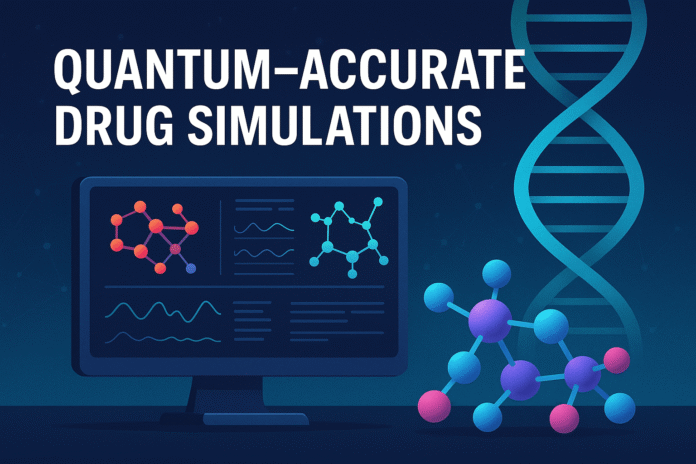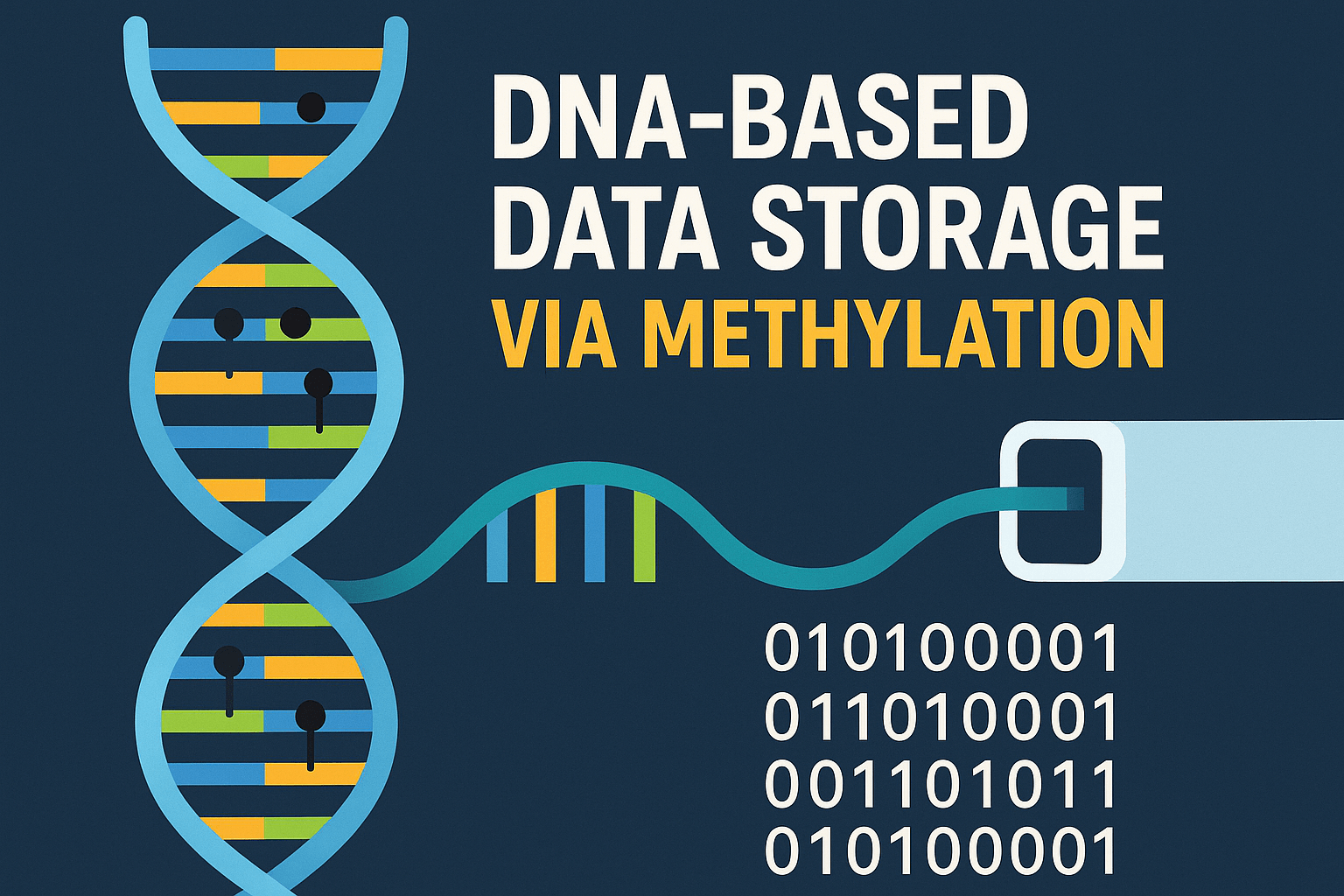Introduction
The pharmaceutical industry is undergoing a seismic shift. For decades, drug discovery has been a time-consuming, costly, and uncertain process. It can take over 10 years and billions of dollars to bring a single drug to market. In 2024, a groundbreaking innovation promises to radically accelerate this process: quantum-accurate drug simulations. Combining the raw power of supercomputing with quantum mechanics, this cutting-edge technology is helping scientists simulate molecular interactions with unprecedented precision.
In this article, we delve deep into the world of quantum-accurate drug simulations, how they work, their recent advancements, real-world applications, and what the future holds for medicine and technology.
What Are Quantum-Accurate Drug Simulations?
Quantum-accurate drug simulations refer to the use of quantum mechanical models in supercomputing environments to predict how molecules interact at an atomic level. Unlike classical simulations, which approximate these interactions using empirical formulas or classical physics, quantum-accurate simulations solve equations based on quantum chemistry—like the Schrödinger equation—to achieve near-experimental accuracy.
These simulations can:
- Predict how a drug molecule binds to a target protein.
- Model enzyme-substrate interactions.
- Determine toxicity or side effects before animal testing.
- Reduce reliance on trial-and-error methods in lab-based screening.
Why 2024 Was a Breakthrough Year
In 2024, a team of Australian researchers from the University of Melbourne, in collaboration with global partners, developed a revolutionary quantum-accurate simulation software that can model drug interactions with a level of detail previously thought impossible. Using the world’s fastest supercomputer—Frontier at Oak Ridge National Laboratory—the team achieved real-time simulations of molecular dynamics across systems with over 100,000 atoms.
Their success earned them the Gordon Bell Prize, often referred to as the “Nobel Prize of High-Performance Computing.” The innovation is now considered a pivotal moment in computational drug discovery.
7 Amazing Real-World Uses of Artificial Intelligence
Key Technologies Powering This Revolution
1. Exascale Supercomputing
Supercomputers like Frontier have crossed the exascale barrier, meaning they can perform over a billion-billion calculations per second. This allows researchers to model highly complex biological systems at a molecular level, including large proteins and RNA strands involved in diseases like cancer or COVID-19.
2. Quantum Mechanics Algorithms
The software developed in 2024 uses Density Functional Theory (DFT) and Post-Hartree-Fock methods—two quantum chemistry models—to simulate how electrons behave in molecules. These methods give insight into molecular properties like binding affinity, reactivity, and conformational changes.
3. AI-Enhanced Sampling
To reduce computational load, AI algorithms help identify the most likely conformations or reaction pathways, improving the speed and relevance of the simulations.
4. Cloud and Distributed Computing
The solution is also cloud-deployable, allowing pharmaceutical companies to run these simulations in distributed environments without exclusive access to massive supercomputers.
Applications in Drug Development
1. Early-Stage Drug Screening
Quantum-accurate simulations can reduce a library of 100,000 molecules to just a few hundred high-potential candidates by simulating their interactions with disease targets virtually.
2. Precision Medicine
By simulating how drugs interact with mutated proteins (e.g., in cancer patients), researchers can personalize medications based on a patient’s genetic profile.
3. Antiviral Development
In the wake of COVID-19, researchers are using these simulations to design antivirals that block viral proteins more effectively than current medications.
4. Toxicology and Side Effect Prediction
Before animal trials, simulations can predict adverse interactions with unintended receptors, helping reduce clinical trial failure rates.
Real-World Case Studies
Case Study 1: Simulating Alzheimer’s Proteins
Researchers used the 2024 simulation platform to study amyloid-beta aggregation in Alzheimer’s disease. For the first time, they could visualize how small molecules could disrupt plaque formation at an atomic level—offering new leads for therapeutic development.
Case Study 2: Fighting Antibiotic Resistance
A pharmaceutical startup used quantum simulations to model the interaction between antibiotics and resistant bacterial enzymes. Within 3 months, they identified a new molecule with high efficacy against MRSA (Methicillin-resistant Staphylococcus aureus), which is now entering pre-clinical trials.
Benefits Over Traditional Drug Discovery
| Feature | Traditional Methods | Quantum-Accurate Simulations |
|---|---|---|
| Speed | 10–15 years | Potentially 2–5 years |
| Cost | ~$2 billion | Reduced by 30–50% |
| Accuracy | Moderate (classical approximation) | Very high (quantum-level detail) |
| Flexibility | Limited to wet-lab tests | Simulate thousands of variations |
| Ethical Concerns | Animal testing required early | Reduced reliance on animal models |
Challenges Ahead
Despite its promise, quantum-accurate simulation still faces several hurdles:
- Computational Cost: These simulations are still expensive and time-consuming, though decreasing due to better algorithms and hardware.
- Data Validation: Simulation results must still be validated with real-world experiments.
- Skill Gap: Few scientists are trained in both quantum mechanics and drug development.
- Scalability: Not all companies have access to exascale computing—though this is changing with cloud-based quantum simulation platforms.
The Future: Toward Real-Time Drug Design
Within the next 5–10 years, experts envision a future where quantum-accurate drug simulations will:
- Allow real-time drug design during outbreaks (like COVID-19).
- Make drug discovery accessible to small biotech firms and startups.
- Integrate with quantum computing to further reduce computational load.
This democratization of high-fidelity drug design could lead to an explosion of treatments for diseases currently deemed too rare or complex to pursue.
External References
- Gordon Bell Prize 2024 Winner – University of Melbourne
- Oak Ridge National Laboratory – Frontier Supercomputer
- Nature Reviews Drug Discovery
- MIT Technology Review – Drug Discovery Innovations
Conclusion
Quantum-accurate drug simulations represent a major leap forward in the way humanity approaches disease and treatment. By merging the predictive power of quantum mechanics with the scale of supercomputing, this technology enables faster, cheaper, and more precise drug development. As 2024 demonstrated, we are entering a new era where AI, physics, and biology converge to redefine the future of medicine.













[…] Quantum-Accurate Drug Simulations: A Breakthrough in Drug Discovery 2024 […]